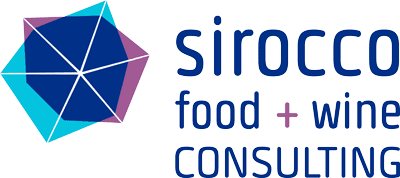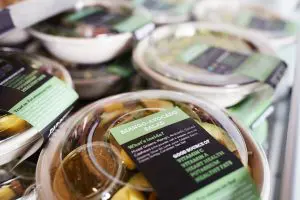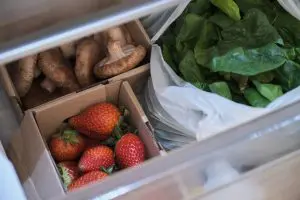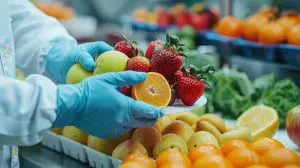What is Traceability?
The Codex Alimentarius Commission defines traceability as “the ability to follow the movement of a food through specified stage(s) of production, processing and distribution”.1
For the Canadian Food Inspection agency, traceability is the ability to follow an item or a group of items – be it animal, plant, food product or ingredient – from one point in the supply chain to another, either backwards or forwards”.2
For a food manufacturer or a food importer, internal traceability consists in tracing the movement of food to the immediate customer (“one step forward”) and tracing the flow of food backwards to the immediate supplier (“one step back”). This process is critical to provide rapid identification of the origin and flow of commodities through the food supply chain. It provides a tool to enable fast recall action during crises where food which has been identified as unfit for consumption can be held and removed from distribution. This in turn minimises food safety risks and protects the consumer.
Regulatory and Industry Requirements
Recall requirements under FDA Preventive controls for human food (2015)
The preventive controls for human food rule doesn’t specify how traceability is achieved but the affected product must be recalled and effectiveness checks performed as per the following instructions:
“Recall Plan: If the hazard analysis identifies a hazard that requires a preventive control, you must have a written recall plan that includes the procedures that describe the steps to perform the recall and at minimum assigns responsibility for:
- Notifying the direct consignees of the food being recalled, including how to return or dispose of the affected food;
- Notifying the public about hazards in the food;
- Conducting effectiveness checks; and
- Appropriately disposing of the recalled product.”
Traceability requirements under Safe Food for Canadians Act and Regulations (2019)
“The traceability documents (Refer to Sections 90 and 91 of the SFCR) must:
identify the food: the common name of the food, the name and address of the person who manufactured, prepared, produced, stored, packaged or labelled the food, and a lot code or other unique identifier to trace the food.
trace the food one step back to the person who provided you with the food, including the date on which the food was provided to you.
trace the food one step forward to the person to whom you provided the food, including the date on which you provided the food.
if applicable, identify and trace back the ingredients you use to make the food, including the date on which they were provided to you.
if applicable, identify and trace back the food animals you slaughter.
Clear and readable records are to be maintained for two years, be accessible in Canada, and provided to CFIA upon request. Where electronic records are used, they need to be provided in a single file and in a format that can easily be opened and used in standard commercial software.
Upon request, you provide the traceability documents to the Canadian Food Inspection Agency (CFIA):
- in English or French;
- and within 24 hours of the CFIA making the request;
- within a shorter period of time if the CFIA believes there is a risk of injury to human health;
- and within a longer period of time if the CFIA believes that the information is not necessary for a recall.”
Safe Quality Food – Edition 8.1 (2019)
“2.6.2 Product Trace (Mandatory)
2.6.2.1 The responsibility and methods used to trace product shall be documented and implemented to ensure:
- Finished product is traceable to the customer (one up) and provides traceability through the process to the manufacturing supplier and date of receipt of raw materials, food contact packaging and materials and other inputs (one back);
- Traceability is maintained where product is reworked; and
iii. The effectiveness of the product trace system shall be reviewed at least annually as part of the product recall and withdrawal review (refer to 2.6.3.3).
2.6.2.2 Records of raw and packaging material receipt and use, and finished product dispatch and destination shall be maintained.”
One step forward-One step back (Codex) Traceability
Demonstrating effective traceability relies on a good manual or electronic record keeping system. Your company will need to maintain operational records in order to perform product traces. Records must capture unique identifiers (lot codes) of known quantities of materials received, used and shipped within the food operations. Your HACCP/food safety plan will be an asset in identifying product movements and key process steps. Records at different stages of the food handling and transformation process must be linked using lot code information and product/material name.
Receiving records
How much stock (in measurable units) is received, from which approved suppliers? What lot numbers are received (ingredients, raw materials, packaging materials, processing aids)?
Production records
How do you track production batches, lot codes and number of units produced for each batch based on the Bill of Materials? How many units are held, awaiting reprocessing or disposition? Were goods written off or donated?
When reworking batches of finished goods, how do you track lot code information?
Shipping records
How many SKUs (Stock Keeping Units) of finished goods/WIP were shipped to customers, co-packers, and third-party logistics companies? What finished product/WIP lot codes (Best Before dates) were shipped to customers?

Testing the efficacy of your Traceability Program
Once yearly and depending on customer requirements, you will be required to perform a product trace exercise to demonstrate that you have full control over your inventory. You will choose at random a material or finished goods, identify its lot code and trace it back to your suppliers or forward to your customers. A review of the product transactions within the business will allow you to conduct an inventory reconciliation, also referred to as a “mass balance” exercise.
Finished Goods Trace
Units Produced = Units Shipped + Units in Storage + Units destroyed or held + Units returned
Material Trace
Units received = Units transformed + Units in storage + Units destroyed or held
Product traces are time-bound exercises and should be completed within two to four hours. The goal of the mass balance exercise is to account for 100% of your inventory for a given lot code. You are expected to justify large inventory discrepancies that cannot be explained by process waste alone. Trace exercises and corrective actions must be documented.
Traceability is a regulatory and third-party certification requirement. It is a key element of your food safety management system which helps you manage risks. Having a detailed and accurate record keeping system permits quick action during product recall or withdrawal from the market. The need for robust traceability systems increases with business growth and customer demands. Companies may decide to acquire food traceability software to collect, store and trace inventory data.
For more information regarding traceability audits, we recommend this white paper by Plant.ca.
References





